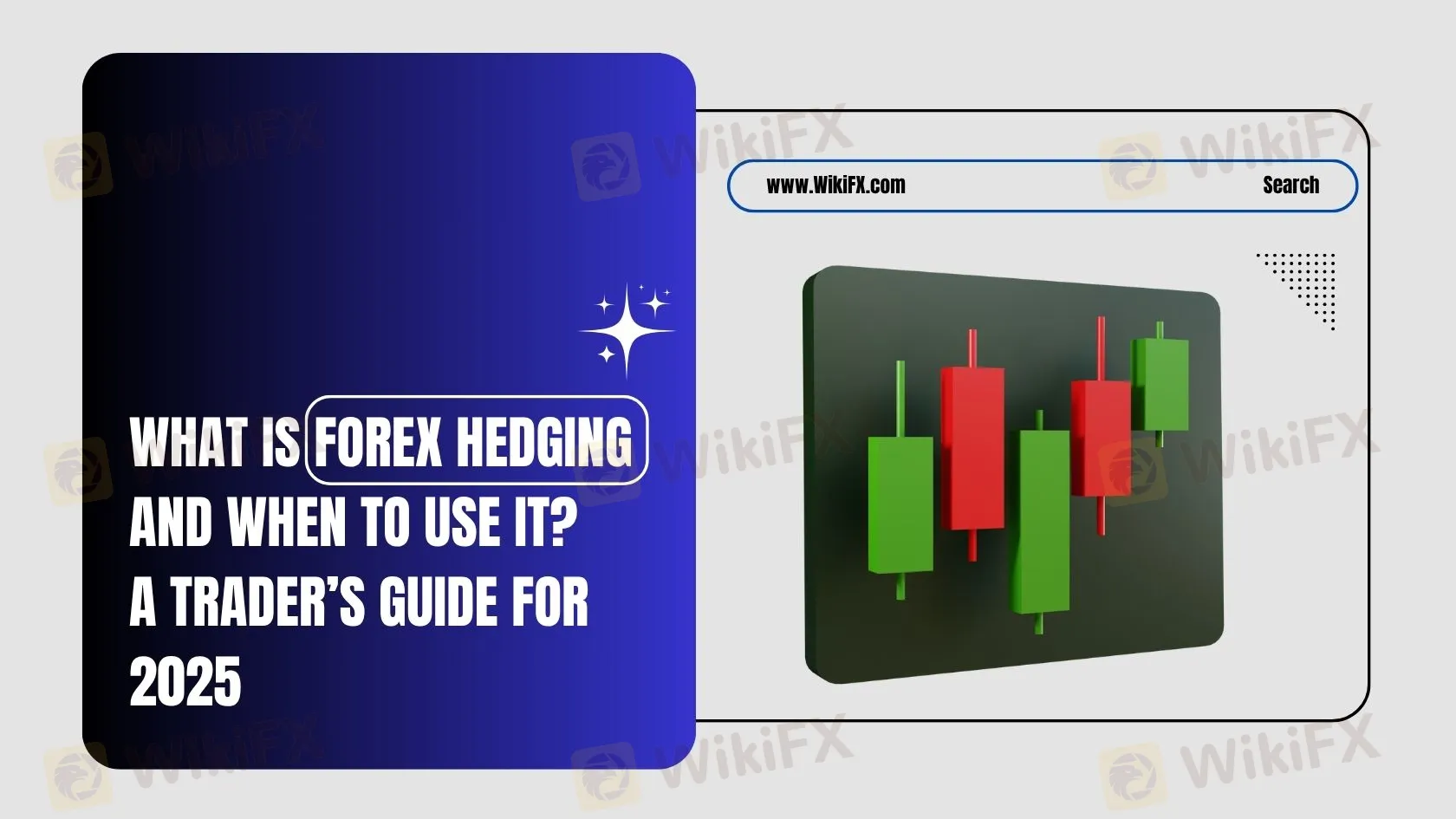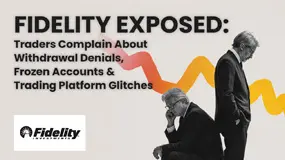简体中文
繁體中文
English
Pусский
日本語
ภาษาไทย
Tiếng Việt
Bahasa Indonesia
Español
हिन्दी
Filippiiniläinen
Français
Deutsch
Português
Türkçe
한국어
العربية
Forex Hedging Strategies Explained: Smart Risk Management for 2025
Abstract:Learn how to hedge in forex trading with real examples, timing strategies, and risk tips. A 2025 guide to smart hedging for retail and institutional traders.

Understanding Forex Hedging: A Strategic Necessity
In the highly volatile forex market, traders face constant risks due to unpredictable price fluctuations. One of the most effective methods to manage such risks is hedging. In simple terms, forex hedging is a strategy where traders open multiple positions to offset potential losses. While it‘s not about eliminating risk entirely, it’s a calculated approach to control downside exposure.
Hedging is just one of many strategies available in forex. For a comprehensive overview of other strategies like scalping, swing trading, or breakout trading, you can explore this guide on best forex trading strategies.
Who Uses Hedging, and Why Does It Matter?
Forex hedging isnt reserved for institutional traders. While banks and corporations use it to protect against currency fluctuations, individual traders can also benefit from hedging. Retail forex traders typically use hedging when exposed to high-risk positions or during volatile events such as central bank announcements.
Before using a hedging strategy, traders should ask themselves a few questions:
- Am I trading with large capital that I cant afford to lose?
- Is market volatility unusually high?
- Do I anticipate major events that could affect my open positions?
If your answer is “yes” to any of these, hedging might be suitable for you.
When Should You Hedge in Forex Trading?
Timing is critical. Hedging is not meant for every situation but is most effective when the following conditions are met:
- You have an open position during high-impact news events.
- You expect short-term fluctuations but believe in a long-term trend.
- You want to lock in profits on one trade while keeping another position active.
Use economic calendars and volatility indicators to help determine optimal timing.
Practical Forex Hedging Strategies With Real Examples
1. Direct Hedging
A trader buys and sells the same currency pair simultaneously. For example, going long EUR/USD while also opening a short EUR/USD.
Case Study:
Emma, a London-based trader, opened a long position on EUR/USD at 1.1000. Just before the ECB interest rate announcement, she shorted the same pair to cover potential volatility. After the news, she closed the short trade at a profit and maintained her long position, which she closed later when the market rebounded.
Pros: Protects during uncertainty.
Cons: Can reduce net profit due to opposite trades.
2. Multiple Currency Hedging
This involves trading correlated pairs. For example, going long EUR/USD and short USD/CHF, since both have USD as a common leg and often move inversely.
Case Study:
Luis from Madrid opened a long EUR/USD and a short USD/CHF. When USD strengthened, the loss on EUR/USD was compensated by the profit on USD/CHF.
Pros: Effective if correlation is strong.
Cons: Correlation may break unexpectedly.
3. Options-Based Hedging
Buying a forex option allows you to set a price (strike price) to buy or sell a currency pair in the future, which protects you from adverse movements.
Case Study:
Hannah, a UK corporate treasurer, bought an option to sell GBP/USD at 1.2700 while having open exposure due to international receivables. When GBP fell to 1.2400, she exercised the option, saving significant value.
Pros: Flexible and less restrictive.
Cons: Premiums can be expensive.
| Strategy Type | Best For | Risk Level | Cost | Notes |
| Direct Hedging | News trading, volatility | Medium | Moderate | Immediate protection |
| Multiple Currency Pairs | Trend-following correlations | Medium | Low | Requires strong correlation analysis |
| Options Hedging | Long-term positions | Low | High (premium) | Good for corporate protection |
How to Build Hedging Skills as a Retail Trader
Learning to hedge effectively requires understanding the relationship between currency pairs, interest rate differentials, and global economic events. Resources like the WikiFX app provide access to broker tools, demo accounts, and risk analysis instruments. Backtesting your strategy on historical data is essential.
Start simple: try demo accounts to simulate direct hedging. Gradually explore correlation-based strategies and then move on to options if supported by your broker.
Be sure to verify whether your broker allows hedging. Not all platforms support it due to local regulations.
Hidden Risks You Should Be Aware Of
While hedging can reduce losses, it can also eat into profits. Spreads, swap fees, and execution delays all impact net performance. Also, regulatory constraints may prohibit or limit hedging activities, especially under ESMA in Europe.
Check your brokers terms or verify their legitimacy on WikiFX Broker Search to ensure compliance.
Conclusion: Is Forex Hedging Right for You?
Forex hedging is not a beginner‘s trick, but with proper planning, it can be an effective layer of protection. Whether you’re trading during volatile market conditions or managing long-term exposures, mastering hedging can improve your risk-adjusted returns. The key is to start small, understand each methods strengths and weaknesses, and choose the one that aligns with your trading objectives.
FAQ
Q1: Is hedging legal in all countries?
No. Some regions like the U.S. have regulations that limit or disallow certain types of hedging for retail clients.
Q2: Does MT4/MT5 allow hedging?
Yes, most brokers on MetaTrader 4 and 5 support hedging, though some accounts use FIFO rules.
Q3: Is hedging suitable for beginners?
It depends. Beginners should practice with demo accounts and start with basic strategies before advancing.
Q4: Can I hedge manually without complex tools?
Absolutely. Simple long/short combinations on correlated pairs can be manually executed.
Q5: How can I verify if my broker allows hedging?
Use the WikiFX Broker Search tool to check broker features and regulations.
Disclaimer:
The views in this article only represent the author's personal views, and do not constitute investment advice on this platform. This platform does not guarantee the accuracy, completeness and timeliness of the information in the article, and will not be liable for any loss caused by the use of or reliance on the information in the article.
Read more

Fidelity Exposed: Traders Complain About Withdrawal Denials, Frozen Accounts & Platform Glitches
Does Fidelity Investments prevent you from accessing funds despite numerous assurances on your requests? Do you witness an account freeze by the US-based forex broker every time you request withdrawal access? Do you struggle with an unstable trading platform here? Is the slow Fidelity customer service making you face forced liquidation? These issues haunt traders, with many of them voicing their frustration on several broker review platforms such as WikiFX. In this Fidelity review article, we have shared quite a few complaints for you to look at. Read on!

Exposing The Trading Pit: Traders Blame the Broker for Unfair Withdrawal Denials & Account Blocks
Did you receive contradictory emails from The Trading Pit, with one approving payout and another rejecting it, citing trading rule violations? Did you purchase multiple trading accounts but receive a payout on only one of them? Did The Trading Pit prop firm refund you for the remaining accounts without clear reasoning? Did you face account bans despite using limited margins and keeping investment risks to a minimum? These are some raging complaints found under The Trading Pit review. We will share some of these complaints in this article. Take a look.

M&G Review: Traders Report Fund Scams, Misleading Market Info & False Return Promises
Applying for multiple withdrawals at M&G Investments but not getting it into your bank account? Do you see the uncredited withdrawal funds out of your forex trading account on the M&G login? Does the customer support service fail to address this trading issue? Does the misleading market information provided on this forex broker’s trading platform make you lose all your invested capital? Were you lured into investing under the promise of guaranteed forex returns? These issues have become highly common for traders at M&G Investments. In this M&G review article, we have echoed investor sentiments through their complaint screenshots. Take a look!

INZO Broker MT5 Review 2025: A Trader's Guide to Features, Fees and Risks
INZO is a foreign exchange (Forex) and Contracts for Difference (CFD) brokerage company that started working in 2021. The company is registered in Saint Vincent and the Grenadines and regulated offshore. It focuses on serving clients around the world by giving them access to popular trading platforms, especially MetaTrader 5 (MT5) and cTrader. The company offers different types of trading instruments, from currency pairs to cryptocurrencies. It aims to help both new and experienced traders. Read on to know more about it.
WikiFX Broker
Latest News
Forex Expert Recruitment Event – Sharing Insights, Building Rewards
Admirals Cancels UAE License as Part of Global Restructuring
Moomoo Singapore Opens Investor Boutiques to Strengthen Community
OmegaPro Review: Traders Flood Comment Sections with Withdrawal Denials & Scam Complaints
An Unbiased Review of INZO Broker for Indian Traders: What You Must Know
BotBro’s “30% Return” Scheme Raises New Red Flags Amid Ongoing Fraud Allegations
The 5%ers Review: Is it a Scam or Legit? Find Out from These Trader Comments
WikiEXPO Dubai 2025 Concludes Successfully — Shaping a Transparent, Innovative Future
2 Malaysians Arrested in $1 Million Gold Scam Impersonating Singapore Officials
Is FXPesa Regulated? Real User Reviews & Regulation Check
Currency Calculator



